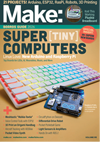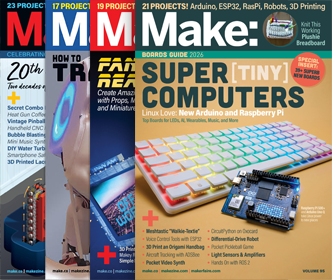Using a plastic bottle label as a built-in etch resist
One of our most-trafficked original tutorials over the past couple of years has been this simple trick for etching designs on glass bottles by using the label itself as a stencil. It’s a quick, satisfying, inexpensive project that yields long-lasting results with common equipment. In the process of porting the original blog post to our new Make: Projects platform, I took the opportunity to revisit the idea, updating the old images and adding a couple of helpful details, all of which was refreshingly easy using the new interface. Check it out.






